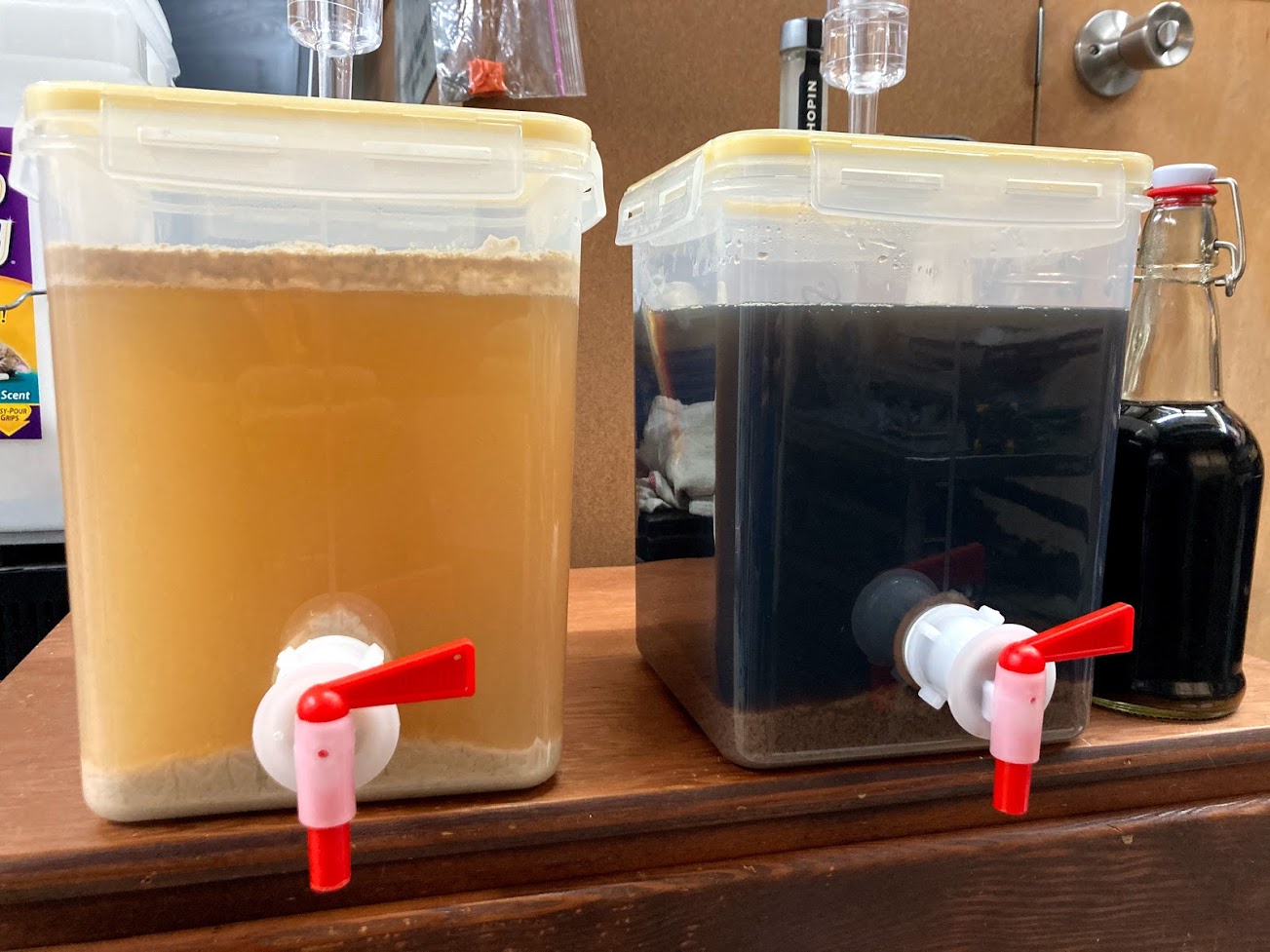My question (which I am sure has been asked a thousand and one times) is is there a general rule of thumb in amount of grain, hops and yeast to follow when brewing this type of beer per gallon? I have read the 1.25-1.5 lbs/gallon for grain, but the hops and yeast amounts I am a bit confused on. Thanks in advance for the information!
Someone with more expertise on IPAs is sure to follow with better specific advice, but the broad strokes response:
- Welcome to brewing!
- I'd recommend just following other people's recipes for, like, 5-10 batches before considering doing your own; even if your recipe is excellent, your method is sure to be flawed, and so there'll be no real way to know what went well or not in your recipe beyond "I liked these hops" or maybe "that was a
ton of crystal malt in retrospect, my bad;" you may even want to just buy pre-made kits from reputable sources, Brooklyn BrewShop for instance
- Speaking of them, I'd recommend two books, namely
the obvious one and a second, specific-to-one-gallon book that's a
solid repository of recipes (I've tried a few, not all, but they're bangers)
- they also have a second book that's maybe good? And after, like, 10-20 brews, you're allowed to buy
this - such is the will of the gods
- I begrudgingly offer
this, though you'll need
BeerSmith more or less the second you stop brewing kits, if for no other reason than record keeping (and there are like a million reasons)
- For hazies, I'm no expert, but there are a range of tricks - a number of breweries
only add hops at Whirlpool and later in order to avoid the majority of...bittering, let's say (isomerization, don't sweat the details) and hop oil loss, and to get that haze, you'll need to employ a combination of a haze-friendly yeast (London Ale III and Voss Kveik, say, Lallemand's, are common), and malt selection (people like, what is it? White wheat malt and flaked barley? Someone will have a specific answer there)
Good luck, and if you need a small batch quality cheat code, grab
something like this (for posterity: a thermoelectric wine fridge with a built-in temperature setter)









































![Craft A Brew - Safale BE-256 Yeast - Fermentis - Belgian Ale Dry Yeast - For Belgian & Strong Ales - Ingredients for Home Brewing - Beer Making Supplies - [3 Pack]](https://m.media-amazon.com/images/I/51bcKEwQmWL._SL500_.jpg)






















